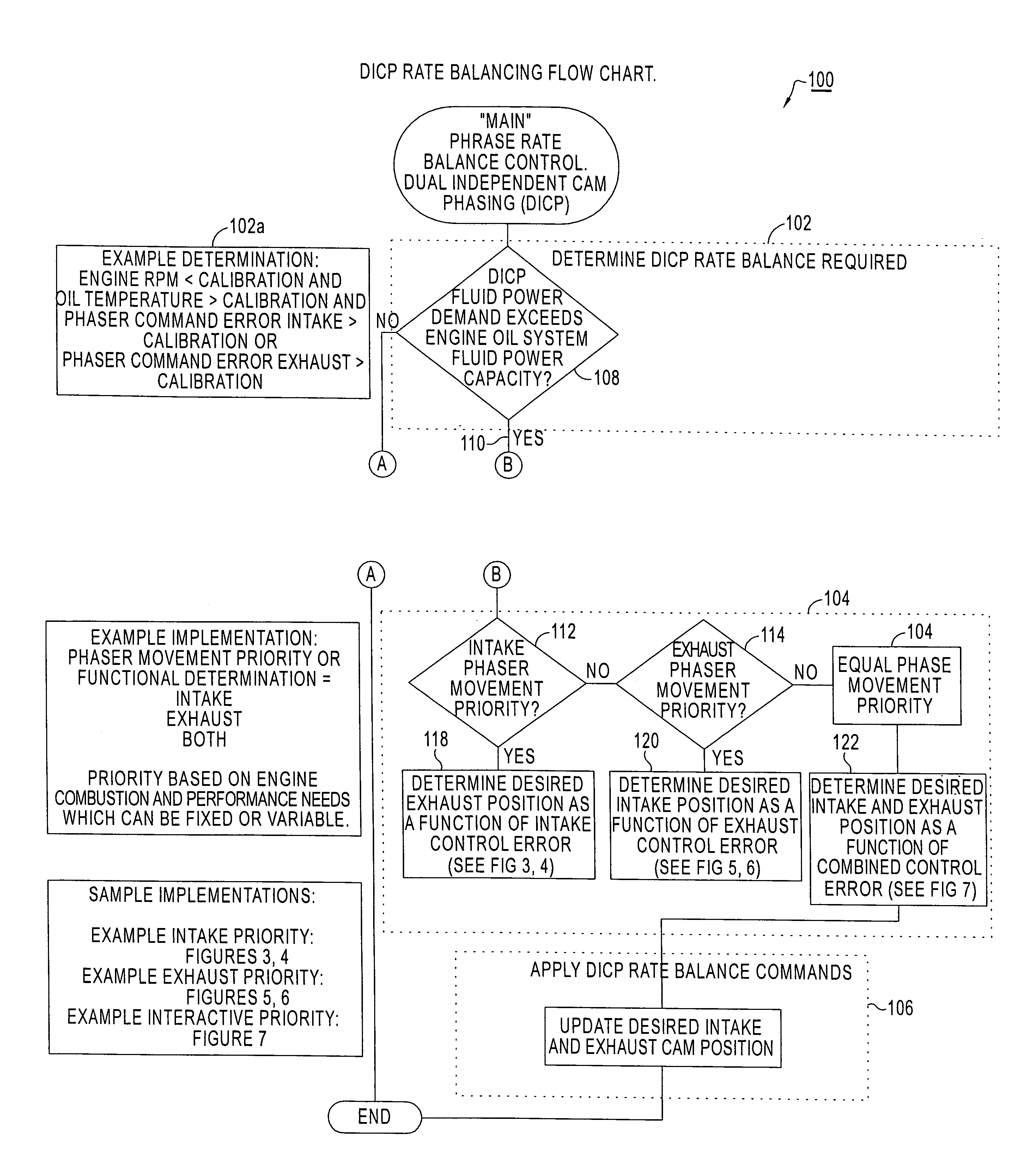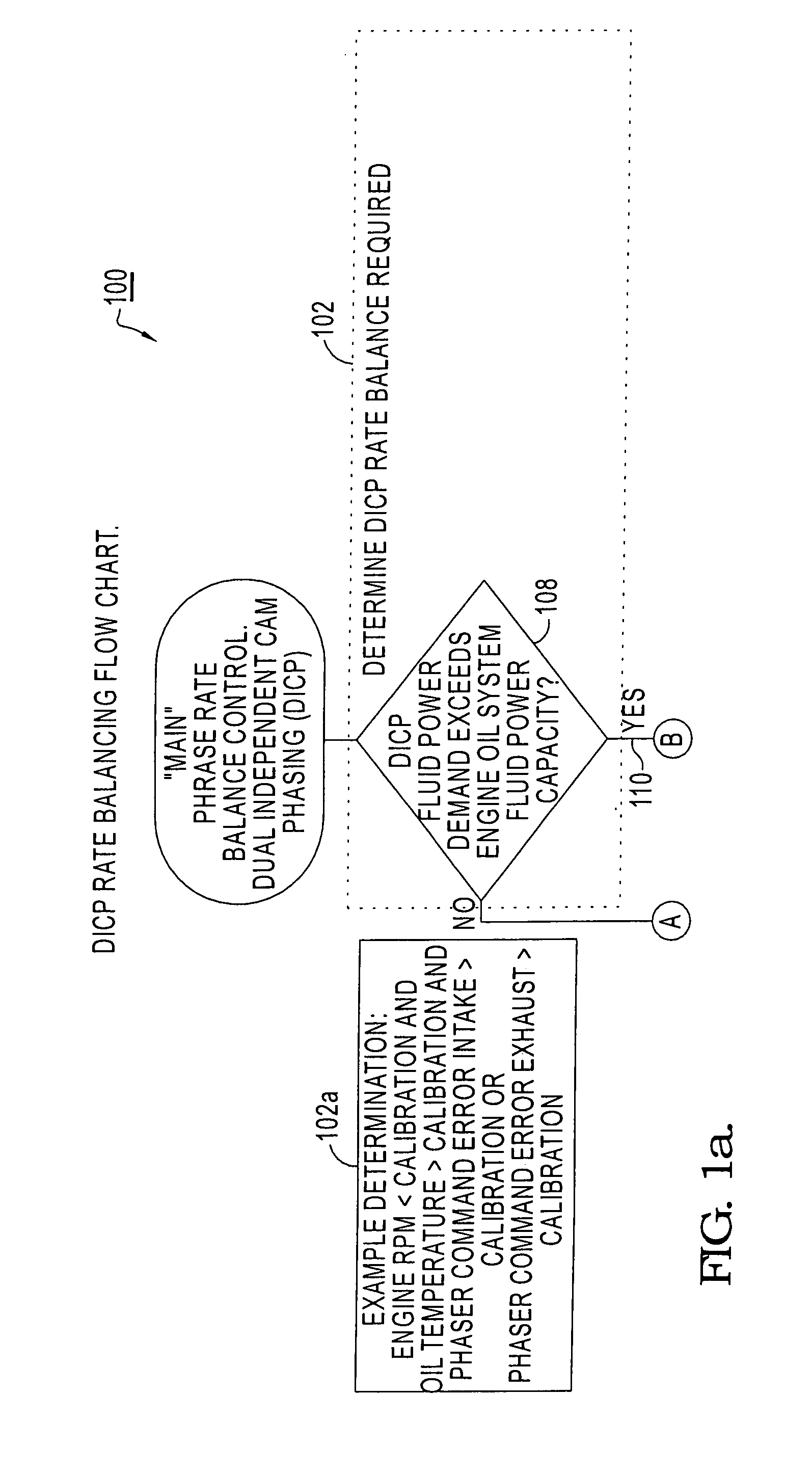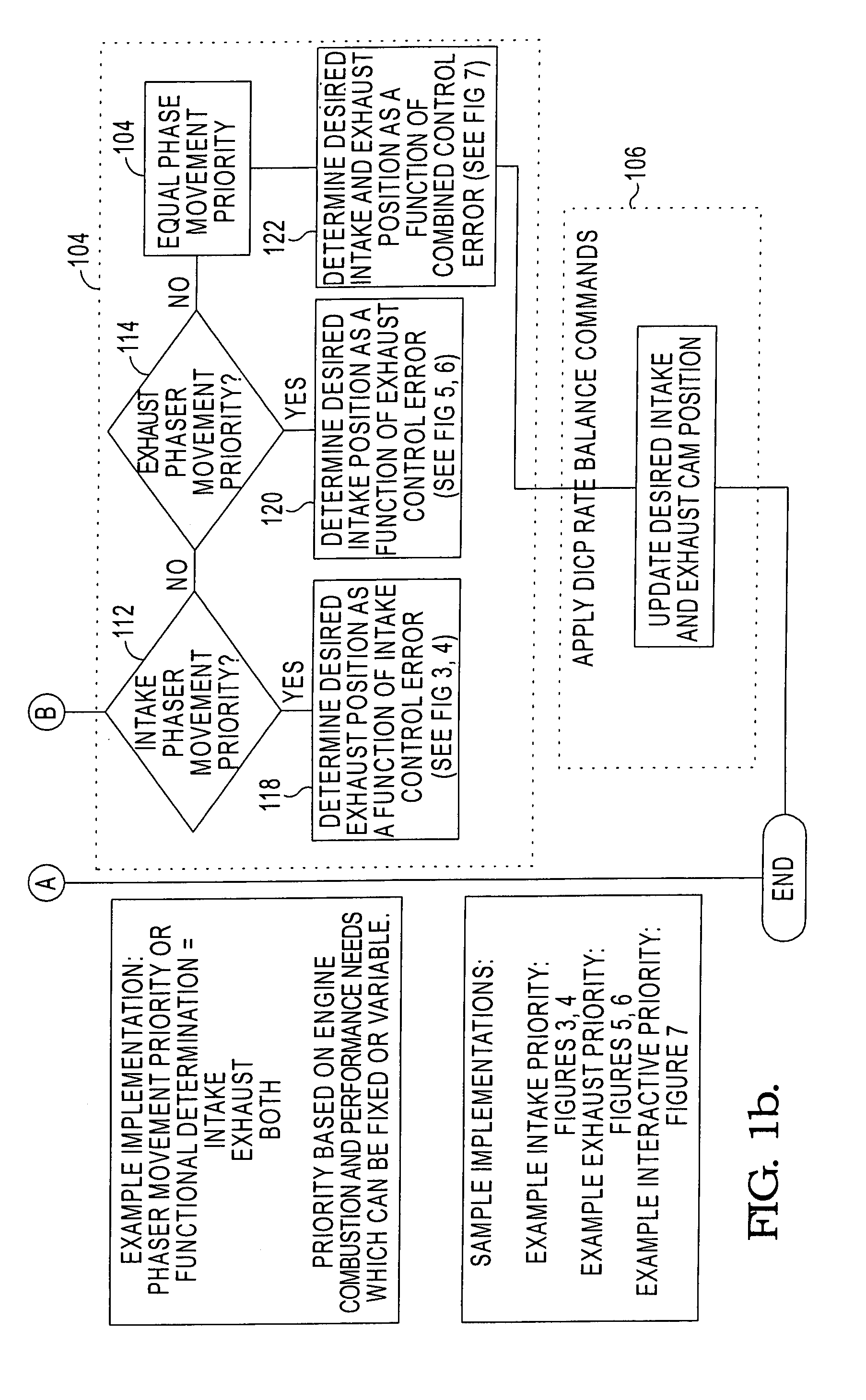Rate limiting and balancing control system for dual independent camshaft phasing
a control system and camshaft technology, applied in the direction of machines/engines, output power, couplings, etc., can solve the problems of large engine oiling system demands, limited coordination of two phasers, and add engine costs, etc., to achieve smooth scheduling of intake and exhaust phaser operation, reduce engine cost, and reduce engine cost
- Summary
- Abstract
- Description
- Claims
- Application Information
AI Technical Summary
Benefits of technology
Problems solved by technology
Method used
Image
Examples
Embodiment Construction
[0016]Referring now to the drawings, wherein the showings are for the purpose of illustrating an embodiment of the invention only and not for the purpose of limiting the same, FIG. 1a shows an internal combustion engine 5, controller 10, and variable cam phasing system for a dual cam engine which has been constructed in accordance with the prior art.
[0017]Engine 5 has an intake camshaft 17a that rotates around an axis and is operable to open and close each intake valve 12a corresponding to each cylinder 16 of the engine 5. The intake camshaft 17a opens each intake valve 12a relative to a top-dead center point of a piston 14 in the corresponding cylinder 16. The opening of each intake valve 12a is measured in units of degrees of camshaft rotation before the top-dead center point, and is also correlated to a position of a crankshaft 20 that is operably attached to each piston 14.
[0018]Engine 5 further has an exhaust camshaft 17b that rotates around an axis and is operable to open and ...
PUM
 Login to View More
Login to View More Abstract
Description
Claims
Application Information
 Login to View More
Login to View More - R&D
- Intellectual Property
- Life Sciences
- Materials
- Tech Scout
- Unparalleled Data Quality
- Higher Quality Content
- 60% Fewer Hallucinations
Browse by: Latest US Patents, China's latest patents, Technical Efficacy Thesaurus, Application Domain, Technology Topic, Popular Technical Reports.
© 2025 PatSnap. All rights reserved.Legal|Privacy policy|Modern Slavery Act Transparency Statement|Sitemap|About US| Contact US: help@patsnap.com



